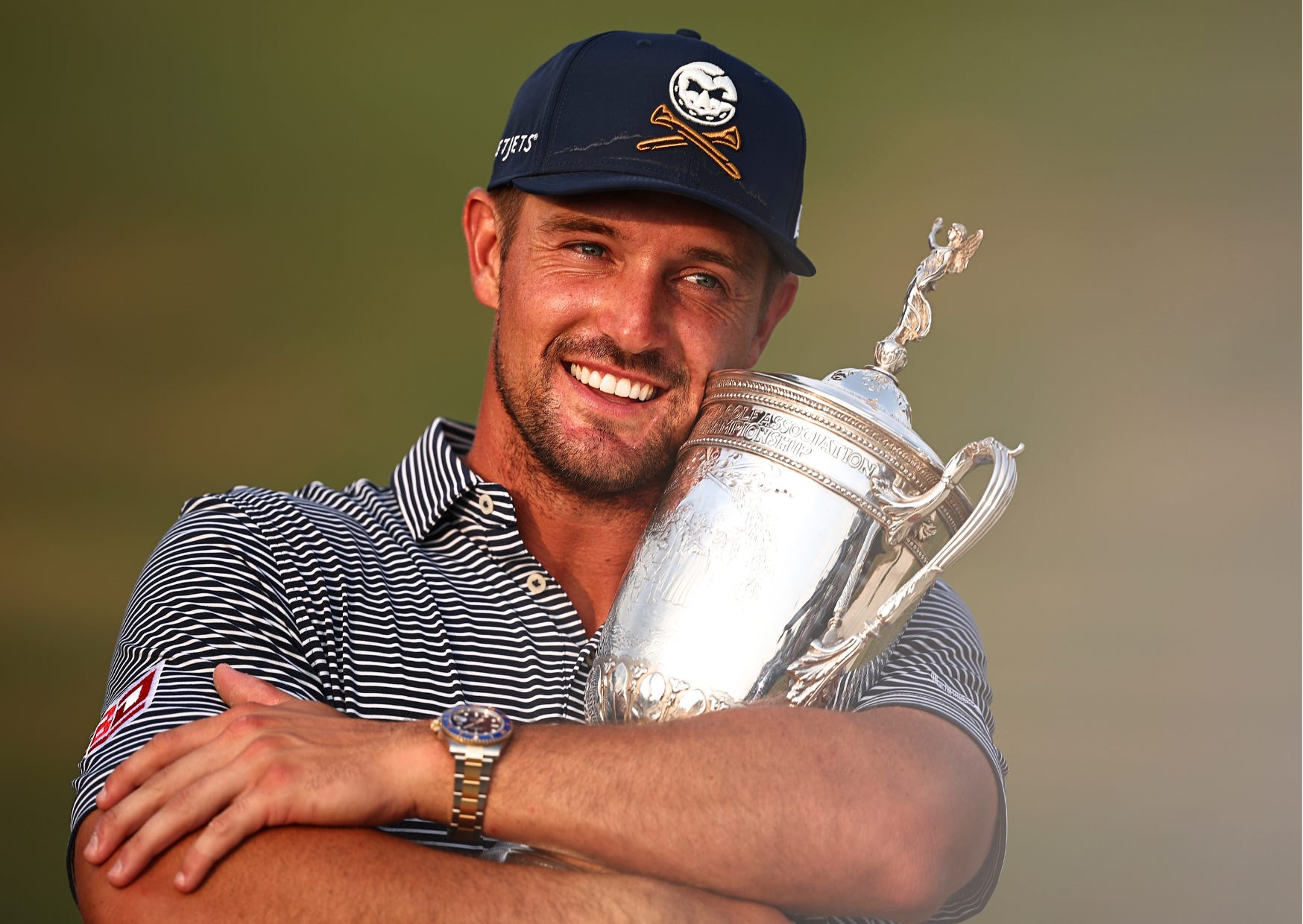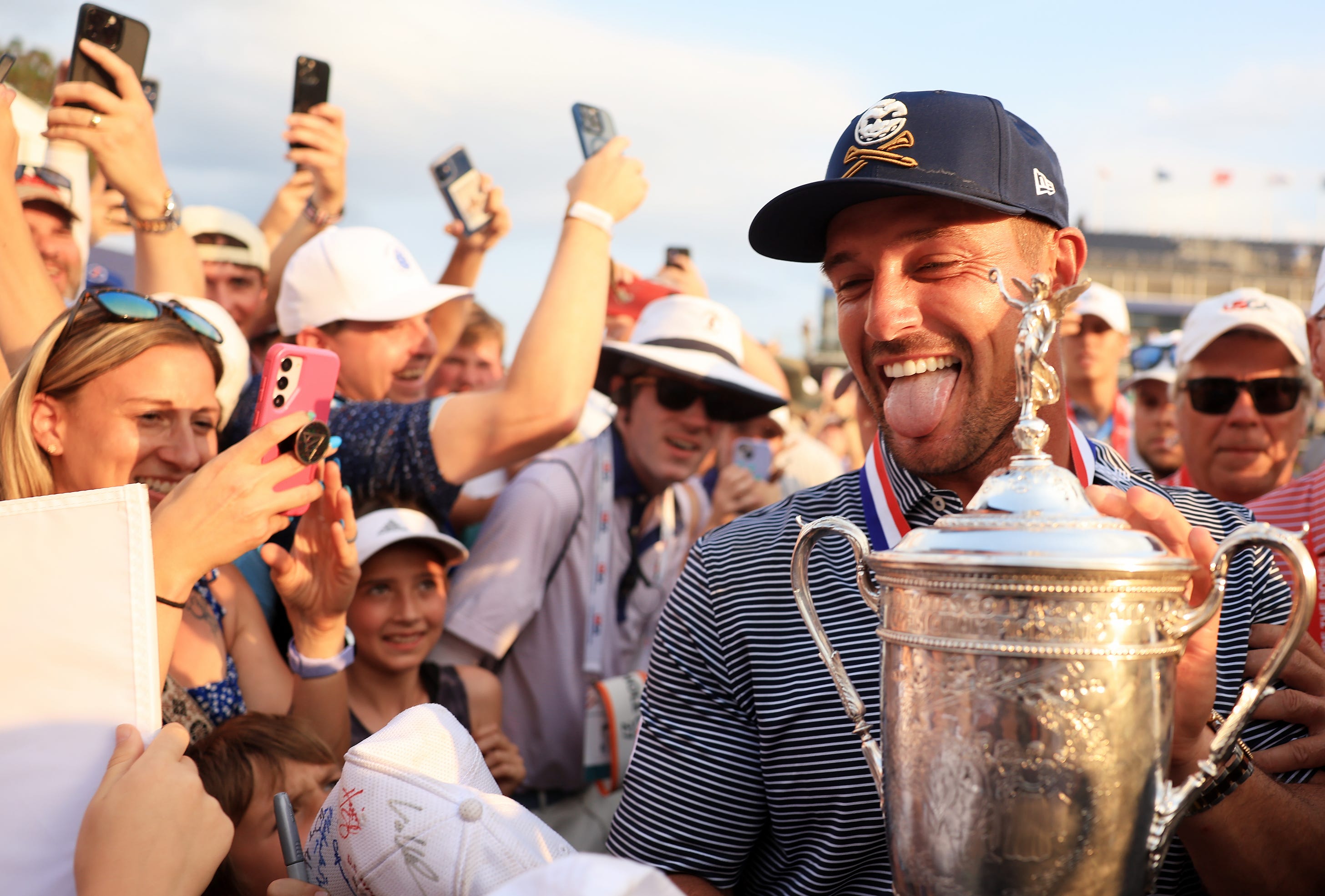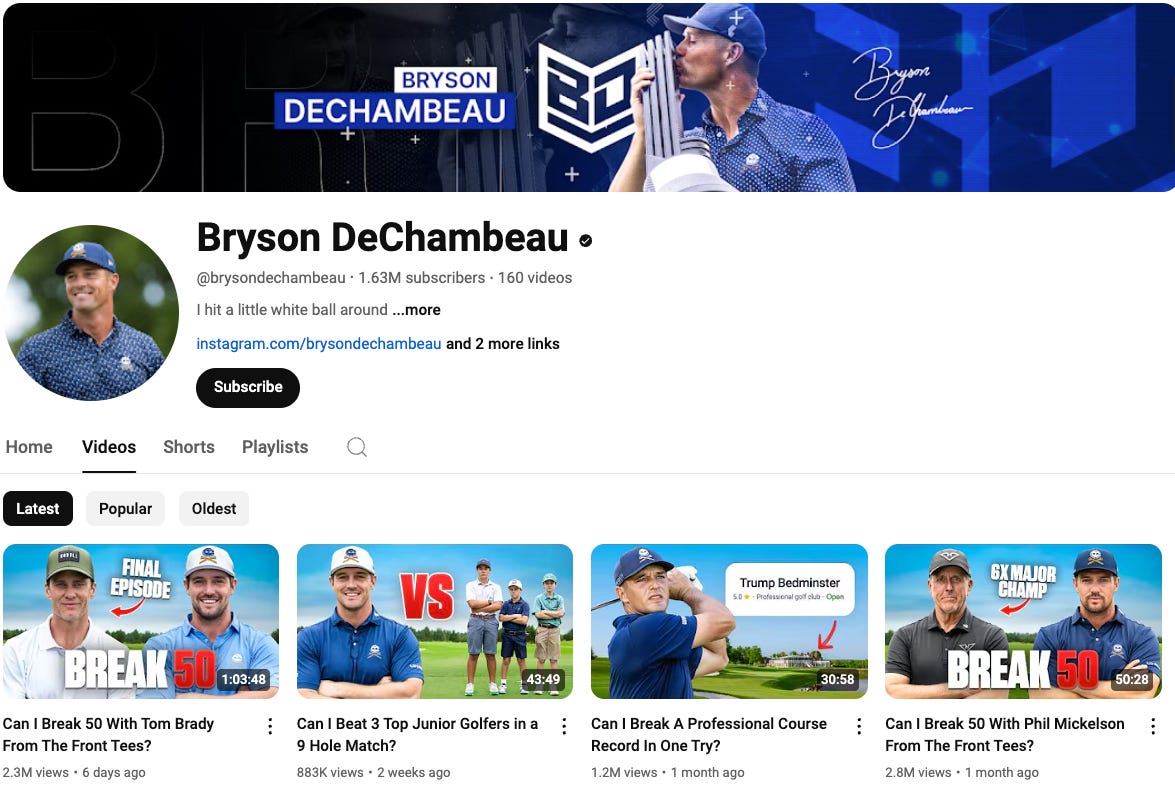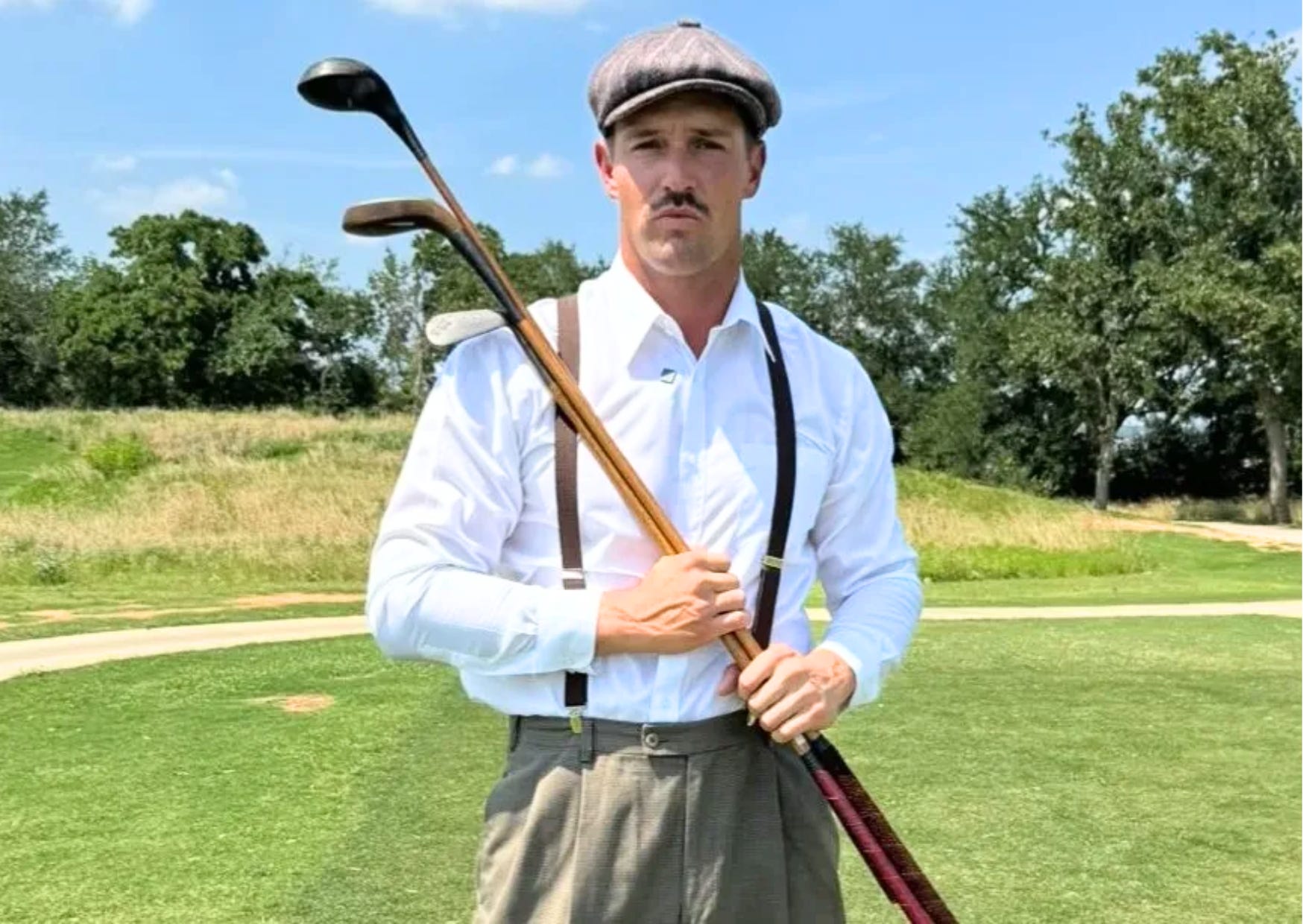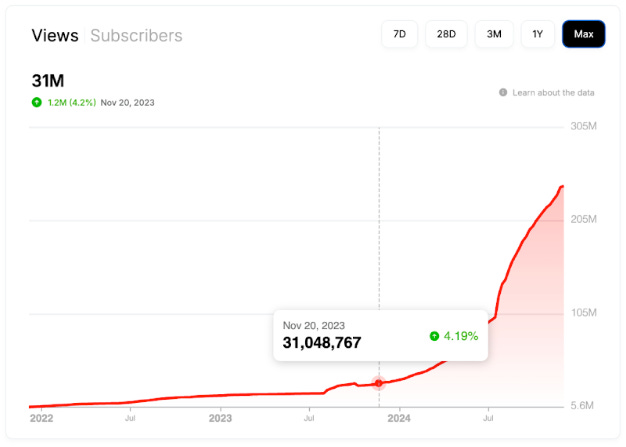How Bryson DeChambeau Became YouTube’s Favorite Golfer
If you have spent any time on the internet over the last few weeks, you’ve probably seen Bryson DeChambeau’s hole-in-one challenge. With LIV Golf’s offseason in full swing, one of the world’s most popular golfers decided to have some fun with fans. The rules were simple: DeChambeau challenged himself to make a hole-in-one, with each day of the challenge determining how many shots he could take. So, on day one, he started with one shot; on day two, he had two shots, and so on. You get the point. The shot was only 97 yards, but DeChambeau had to go over his $2 million house in Texas and drop it in a custom golf hole in his backyard that was 18 feet downhill. As Golf Digest analyzed, it certainly wasn’t an easy shot. An effective distance of 91 feet is similar to the Postage Stamp hole at Royal Troon Golf Club’s Old Course — the site of The Open in 2024 — and Scottie Scheffler led the entire PGA Tour last year in proximity from 100 to 125 yards, finishing with an average distance of 14.8 feet. However, just sixteen days and 134 shots into the challenge, Bryson nailed it. The ball rolled in after landing less than six inches from the hole. DeChambeau threw off his hat, sprinted around the house, grabbed the ball, kissed it, and threw it in the woods. The reaction was funny because it’s how you or I might act in our backyard after hitting a trick shot as a kid. But it was also the perfect example of how Bryson DeChambeau reinvented his image to become one of the world’s most popular golfers. DeChambeau’s hole-in-one challenge consisted of 16 videos. Each video was posted on TikTok, Instagram, and YouTube Shorts. In total, these videos garnered over 170 million views throughout the two-week period. DeChambeau’s TikTok alone averaged 5.2 million viewers per video and had 7 million likes throughout the challenge. And he added nearly 850,000 new followers on TikTok, Instagram, and YouTube.
Bryson DeChambeau’s character arc is one of the most interesting stories in sports. The 31-year-old golfer was called every name in the book — selfish, materialistic, a traitor — when he accepted $125 million to leave the PGA Tour for LIV Golf in 2022. The moral concerns around accepting money from Saudi Arabia’s sovereign wealth fund have already been discussed ad nauseam, and it isn’t up to me to tell you what is right or wrong. However, less than two years later, Bryson is more popular than ever. Over 11 million people watched DeChambeau battle Rory McIlroy during the final round of the 2024 U.S. Open at Pinehurst. Thousands more gathered around the green to see DeChambeau hoist the trophy, and “U-S-A” chants rang out so loud that it sounded more like a home match at the Ryder Cup than a major championship. Everyone has a different opinion as to how DeChambeau was able to become more popular after taking $125 million from Saudi Arabia, effectively accelerating the demise of the professional golf ecosystem to a level that still hasn’t been fixed. Some will tell you that DeChambeau hired a good manager and PR team, while others will say he is simply more mature and likable today than he was in his 20s. And while everyone will admit that YouTube played a part, the conclusion isn’t always the same. For example, guys like Phil Mickelson frequently talk about how DeChambeau is more popular today than he was on the PGA Tour. But rather than attributing it to Bryson taking the initiative to connect with a different generation of golf fans, Mickelson uses it as an example of why the PGA Tour’s media model is archaic. “Monopolistic control of media rights wouldn’t allow for players to use YouTube and other social platforms to promote the game to the next generation and working from within the Tour wasn’t an option. ie Bryson,” Phil Mickelson tweeted earlier this year. But there is just one problem with Mickelson’s thought process — it isn’t true. There is no rule within the PGA Tour Player Handbook that would have disallowed Bryson DeChambeau from creating a YouTube Channel. In fact, DeChambeau started his YouTube channel while he was still on the PGA Tour, posting more than a dozen videos beginning in 2021 until he officially left for LIV Golf in the summer of 2022. So, if the PGA Tour did allow Bryson DeChambeau to post YouTube content while still playing for its organization, what exactly is Phil Mickelson talking about? Well, Phil often talks about how PGA Tour players don’t own their media rights. And that’s true, just like it is for every other major professional sports league, including the NFL, NBA, MLB, NHL, and MLS. Those media rights belong to the leagues, allowing them to sign multi-billion-dollar broadcasting deals, which, in turn, pay the exorbitant salaries of professional athletes (or, in golf’s case, millions in prize money). The idea that PGA Tour players can’t use their own footage is incorrect. All players are welcome to use their official footage on social media provided they 1) request a copy from the PGA Tour and 2) don’t monetize the footage with advertisements. This includes live rights, highlights, and decades of archived content, and the PGA Tour actually has several employees on staff who specifically handle these requests. So, if PGA Tour players are allowed to 1) start a YouTube channel and 2) gain access to their official footage, what exactly is the problem? Well, the third thing I often hear is that the PGA Tour limits player access (i.e., Bryson can’t bring his videographer behind the ropes at a tournament to capture footage for his YouTube channel). However, that’s not true either. The PGA Tour lets players request special access for their in-house content teams to film footage on tournament weekends. These requests could be declined, of course, and maybe they are dependent on the tournament or level of access. But they exist, and pretending they don’t is intellectually dishonest. Instead, Occam’s razor tells us that the simplest explanation is likely correct. Bryson DeChambeau’s social media strategy has tapped into an entirely new category of golf fans. DeChambeau started his YouTube journey by posting “A Week on Tour” videos, attempting to give amateur golfers a look behind the scenes at the PGA Tour. But after a few months, DeCheambeau shifted his strategy. He realized that 99.9% of golf fans would never play on the PGA Tour, and despite the fact that DeChambeau was within that .1%, he could connect with more fans by creating different content. DeChambeau initiated this shift by challenging other professional golfers to 1v1 matches, recording the entire round of golf in a vlog style that performs well on YouTube. He then continued this by challenging Division 1 golfers and even did some celebrity stuff, like when he spent a day playing golf with American actor Chris Pratt. DeChambeau now has a team full of people focused on his content full-time. The Texas native has started posting videos much more frequently to satisfy the YouTube algorithm, and he spent a considerable amount of time testing new concepts, like playing with a $100 Walmart starter set of golf clubs or some old-school hickory clubs. Those two videos alone got 4 million views and added thousands of new subscribers. Through years of testing and data collection — they don’t call him the mad scientist for nothing — DeChambeau’s YouTube channel now looks more like a Dude Perfect competitor than what you would expect from someone with two major championships. The secret is that Bryson has created a style that allows him to show off his skills while also having fun and leveraging the star power of other social media celebrities. Take Break 50, for instance. DeChambeau’s Break 50 challenge is perfect because it’s simple. He pairs up with another golfer, either a professional, creator, celebrity, or athlete, to play from the front red tees with the sole goal of scoring under 50. DeChambeau posts one of these videos each month and just finished season one. He has collaborated with everyone from Phil Mickelson and John Daly to Tom Brady and Donald Trump — and these videos have completely transformed his YouTube channel. The Tom Brady episode has 2.3 million views in six days. Phil Mickelson put up nearly 3 million views in 60 days. John Daly doubled that, bringing in 6 million views in three months. And Bryson nearly broke the internet when he recorded an episode with Donald Trump, garnering 13 million views and raising $250,000 for charity. Even crazier, you can see when DeChambeau started his Break 50 series just by looking at a chart of cumulative views on YouTube. It’s a legitimate hockey stick. DeChambeau now has over 5.5 million followers on social media, more than any other professional golfer in the world not named Tiger Woods. Golf fans have watched more than 2 billion minutes of his content over the last few years, and while DeChambeau doesn’t integrate individual ad deals into his videos, he probably makes more than $50,000 each month just from YouTube’s automated advertising network alone. Bryson obviously doesn’t create content for the money. He has a $125 million fully guaranteed contract with LIV Golf, and Forbes ranked him as the 20th highest-paid athlete in the world last year. Although, generating $50,000 in monthly income from YouTube is no joke. That allows Bryson to cover the cost of his content team and then generate a multiple of that number through sponsorships and increased awareness. The reality is that professional golf looks a lot differently today than it did a decade ago. It’s one of the few sports in the world where the amateur game has seen astronomical growth, but the professional league hasn’t shared the same success. Most of this is due to the ongoing battle between the PGA Tour and LIV Golf. Many fans are tired of hearing millionaires complain about not making enough money and just want to see the world’s best players competing against each other more often. However, I also think some of the divide is due to the fact that golf is inherently not a great TV product. The sport rose to prominence throughout the late 1990s and early 2000s on the back of Tiger Woods. He was dominant and unrelenting, unlike anything we had ever seen in professional golf. However, one thing that isn’t discussed enough is that Tiger’s celebrity status also masked many of the PGA Tour’s biggest problems. Golf fans must commit nearly their entire weekend to watch the final rounds of a tournament. TV broadcasts are littered with commercials, with only about 25% of the coverage consisting of golf shots. And that’s without even mentioning that your favorite golfer might have a bad opening round and miss the weekend entirely. This is precisely why so many people have turned to YouTube. Rather than a football YouTuber having to convince NFL fans to tune into his film breakdowns, YouTube golfers are the real show, and there are millions of people who watch their content but will never consistently tune into the vast majority of the PGA Tour’s 36 annual events. The PGA Tour is aware of this problem and has spent considerable time and resources to fix it. But guys like Tiger Woods and Rory McIlroy are now betting their own money on the continued shrinkage of attention spans with the launch of TGL, their new indoor, tech-infused golf simulator league in Palm Beach, Florida. It’ll be interesting to see how fans react to TGL’s condensed, star-studded format over the next few months, but Bryson DeChambeau’s social media growth is a positive sign. Golf is an incredibly popular global sport that is growing much faster than people realize. Much of that recreational growth hasn’t yet translated to the professional level. But if DeChambeau and other golf YouTubers have taught us anything, it’s that merging those two worlds might end up being the sport’s most valuable path forward. If you enjoyed this breakdown, share it with your friends. Join my sports business community on Microsoft Teams. Huddle Up is a 3x weekly newsletter that breaks down the business and money behind sports. If you are not a subscriber, sign up and join 125,000+ others who receive it directly in their inbox each week. You’re currently a free subscriber to Huddle Up. For the full experience, upgrade your subscription.
© 2024 |

